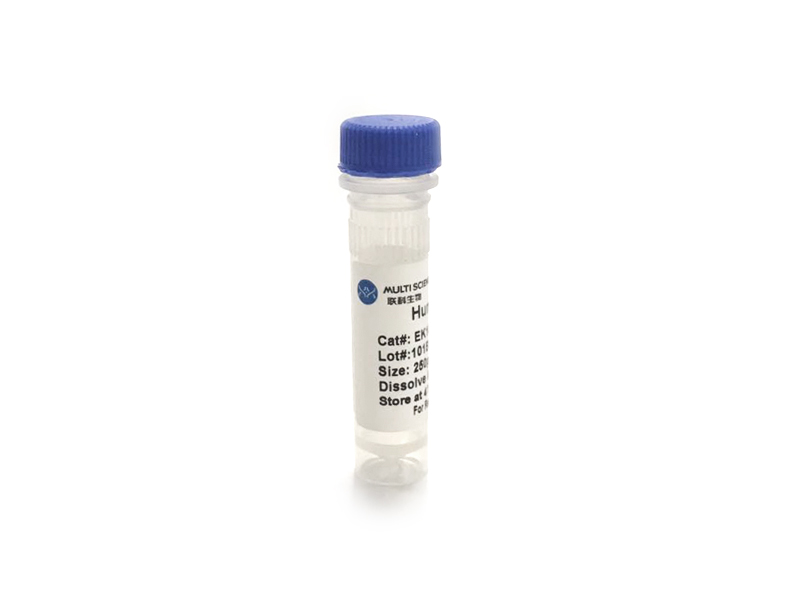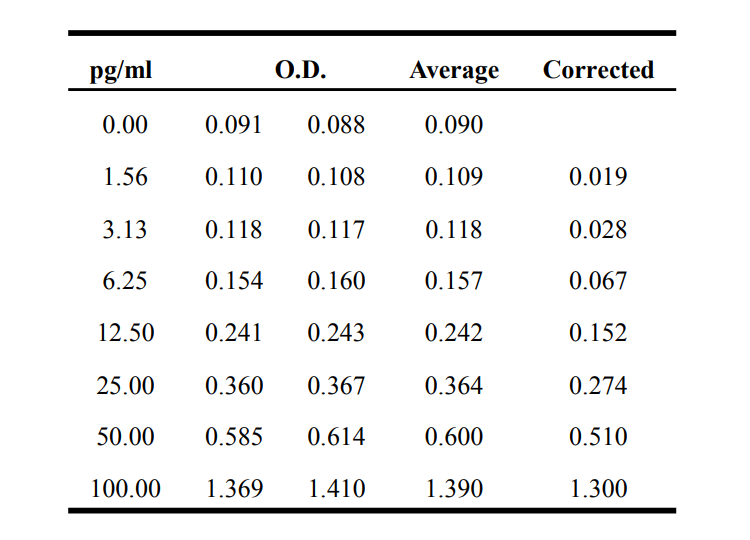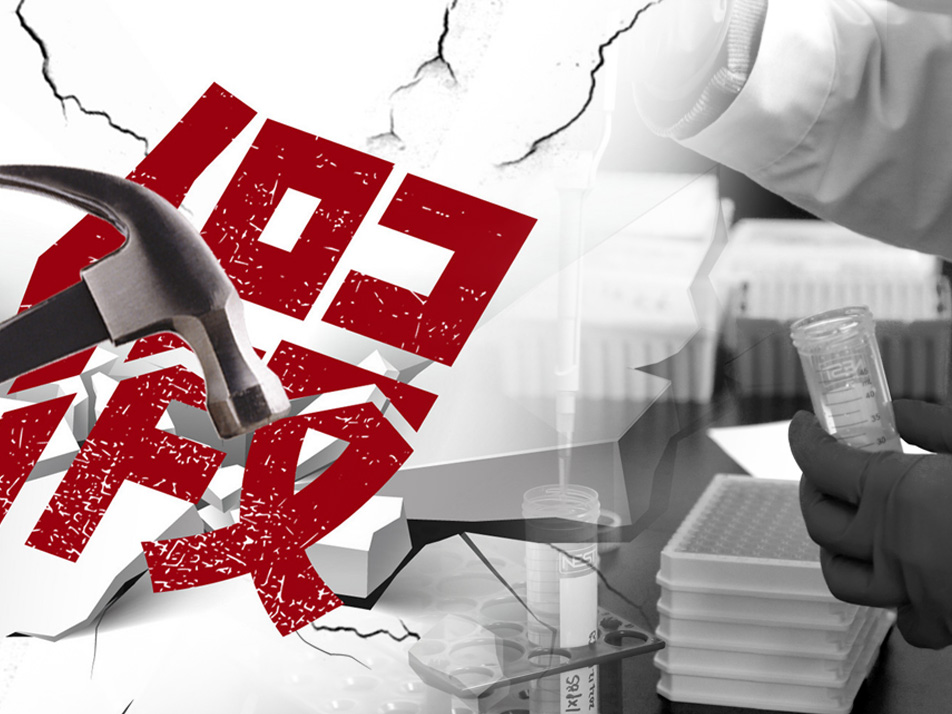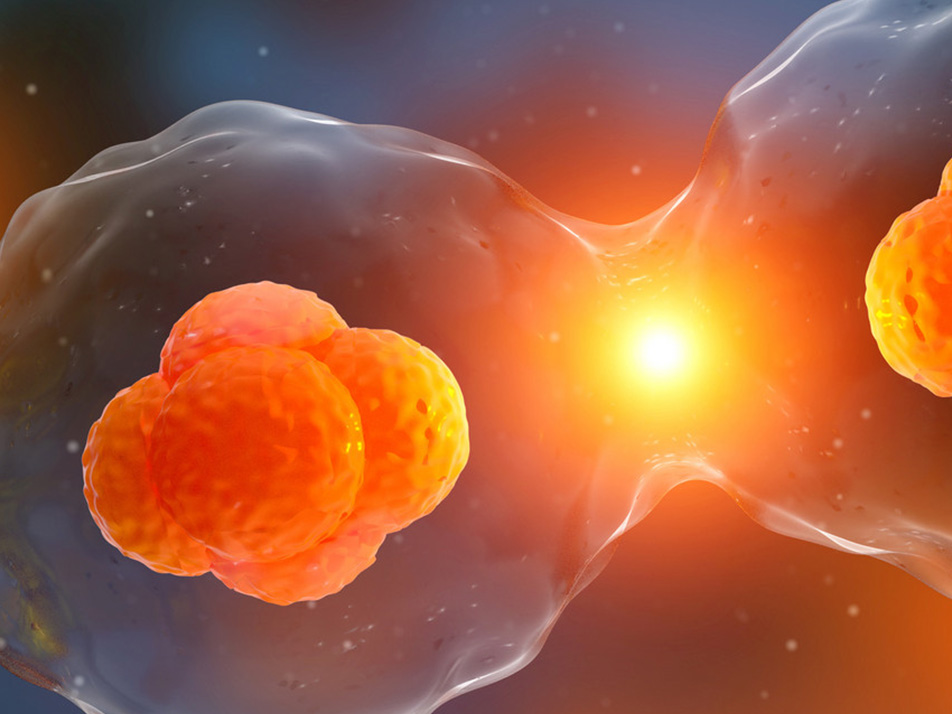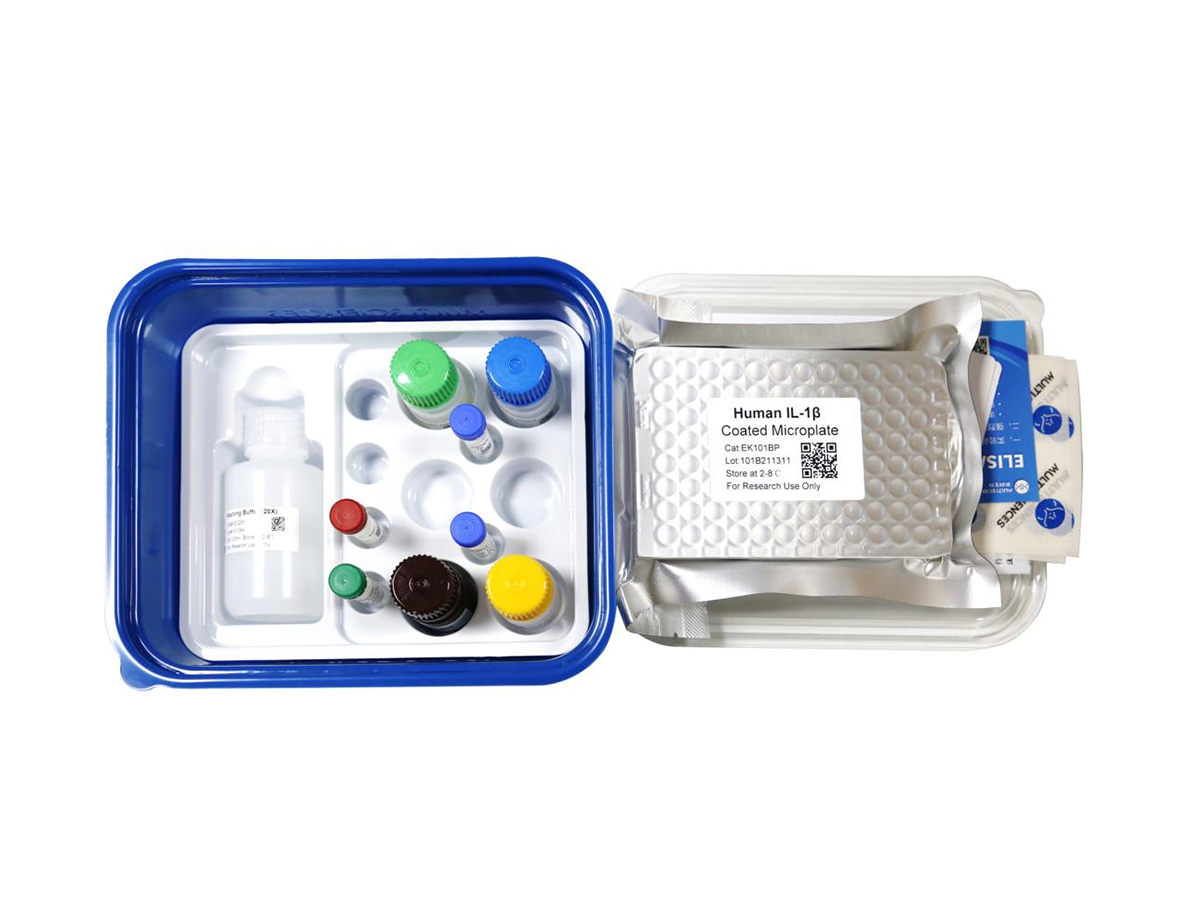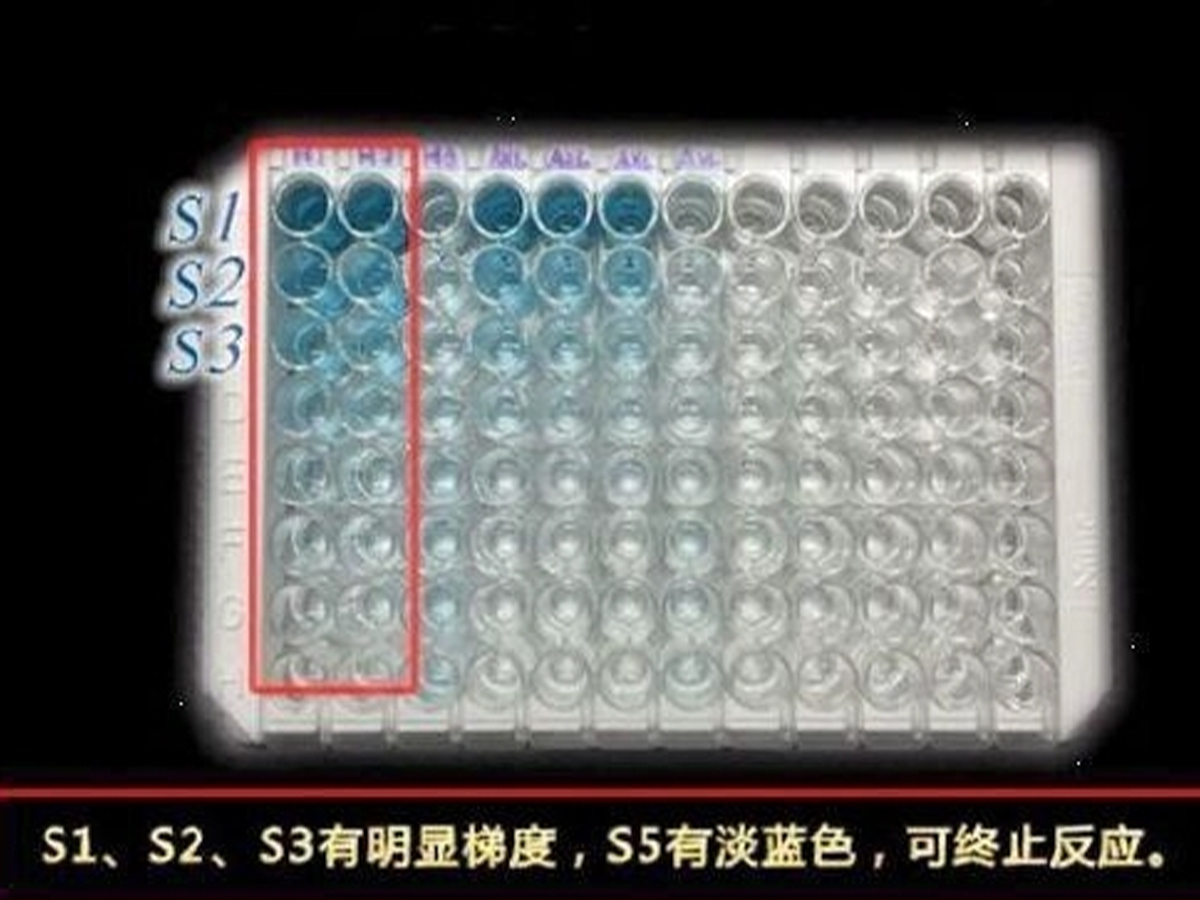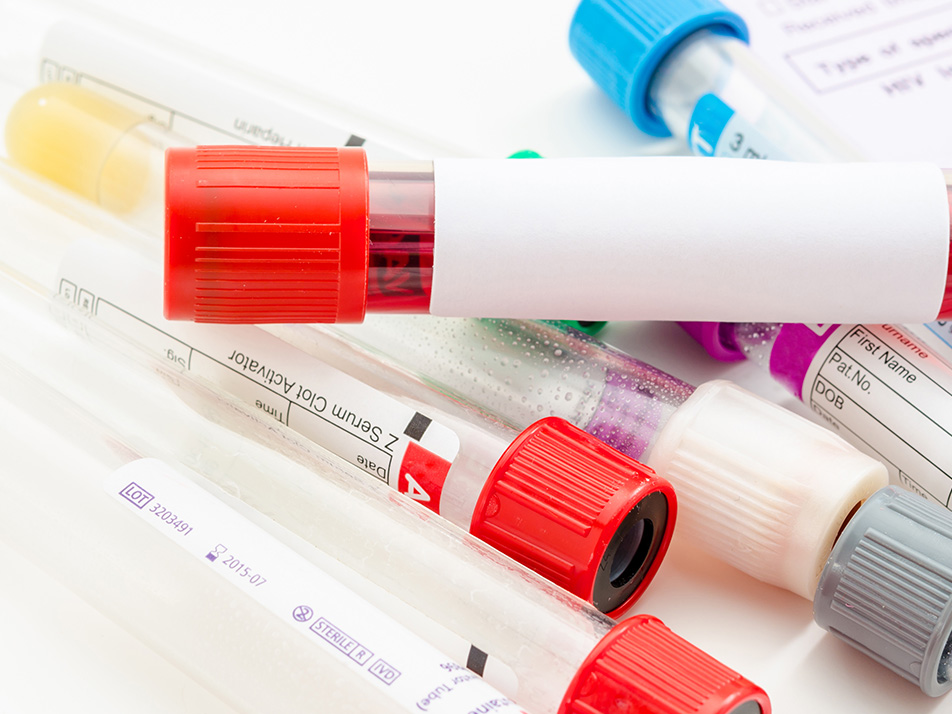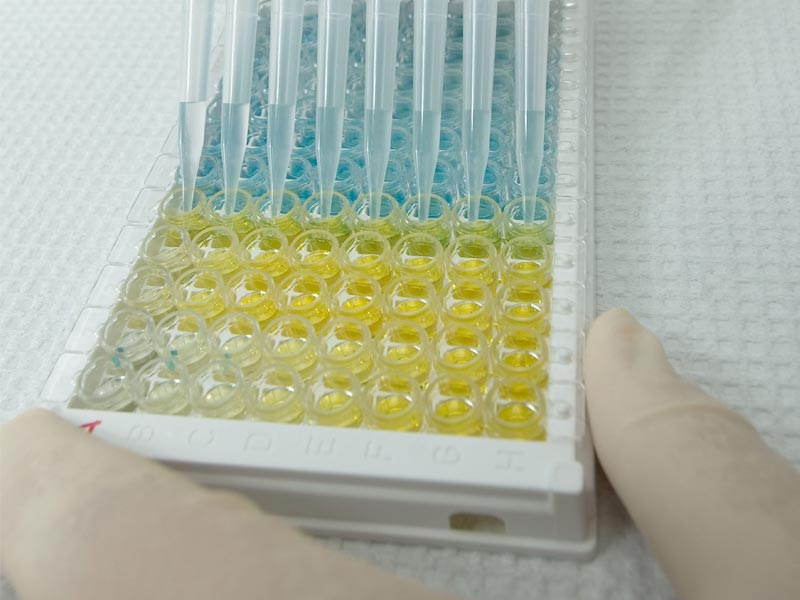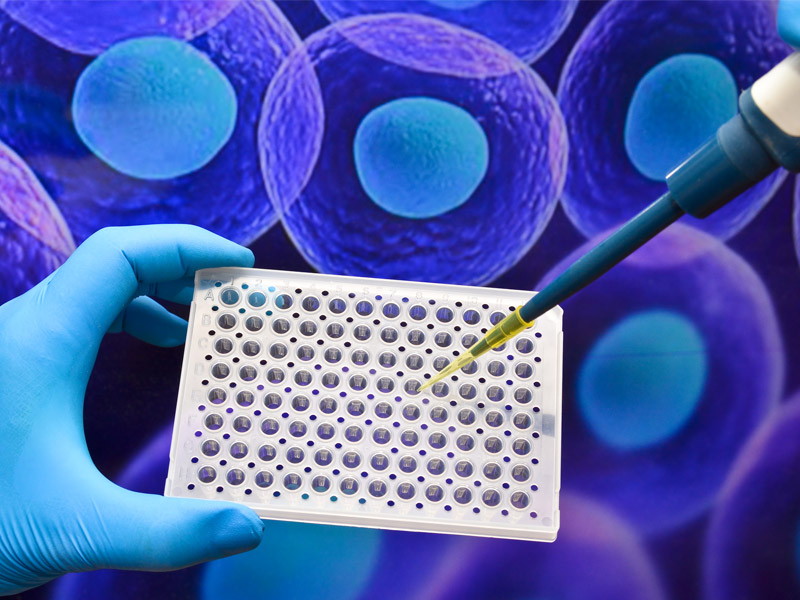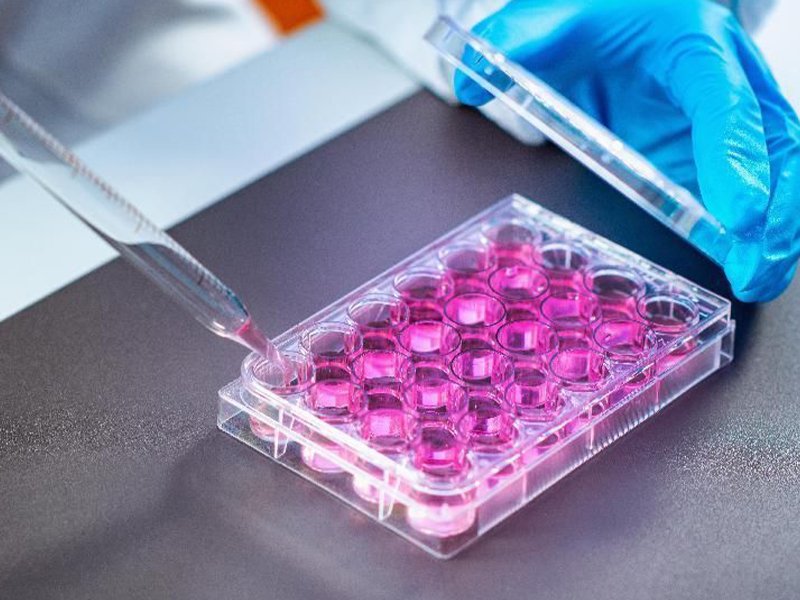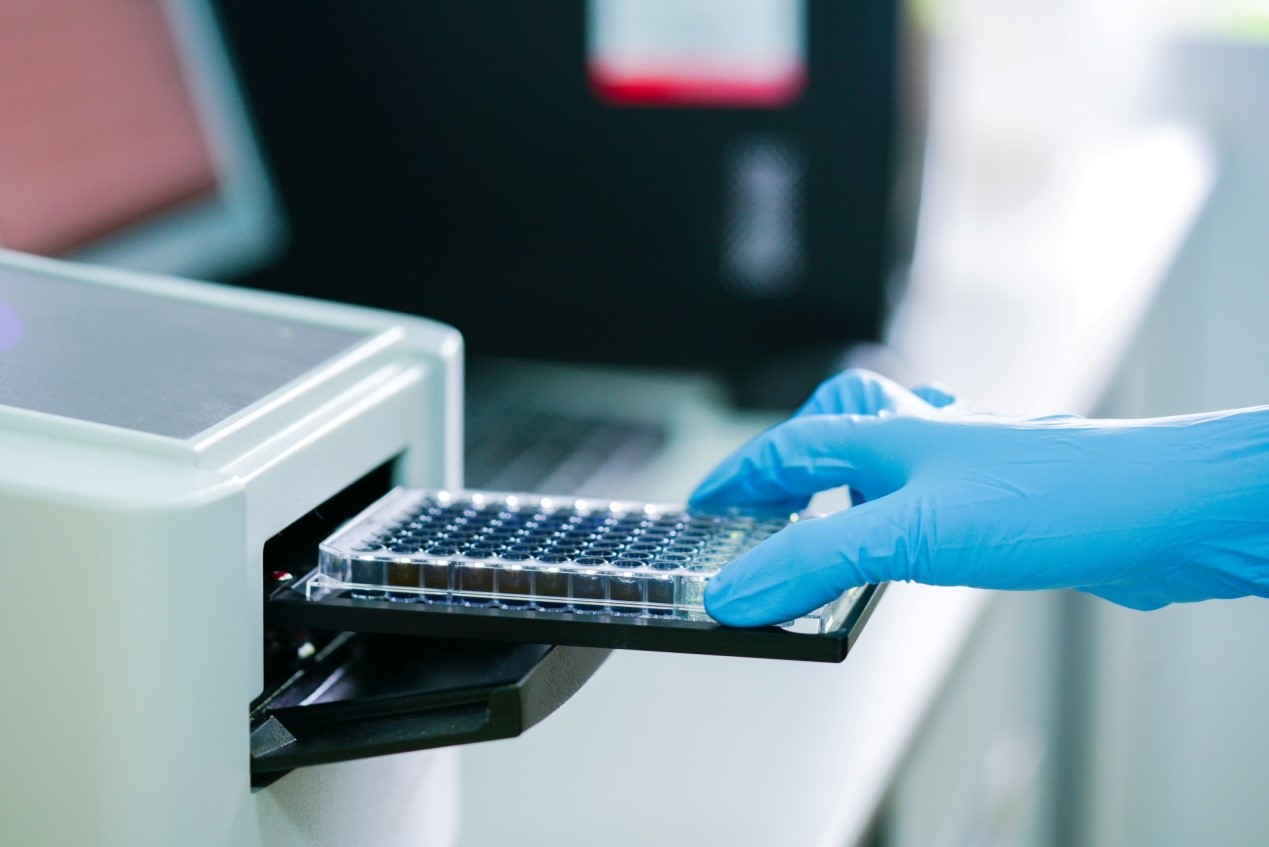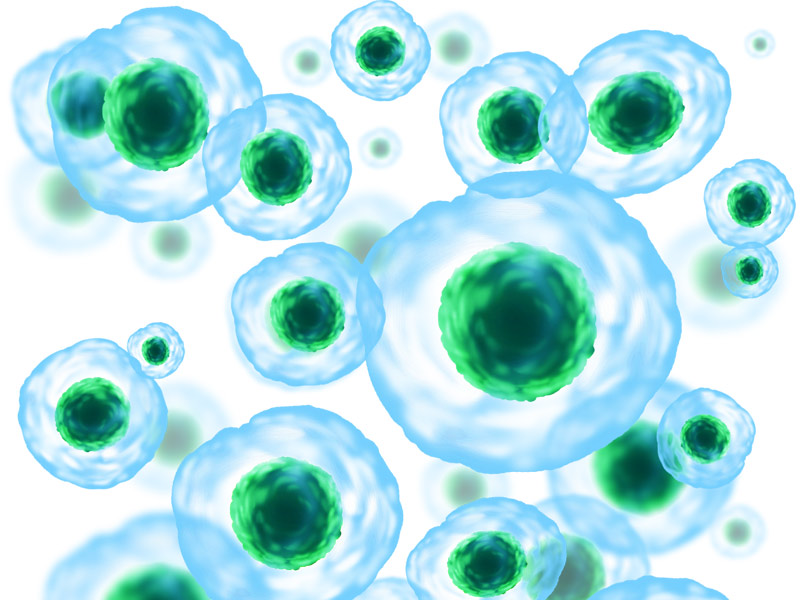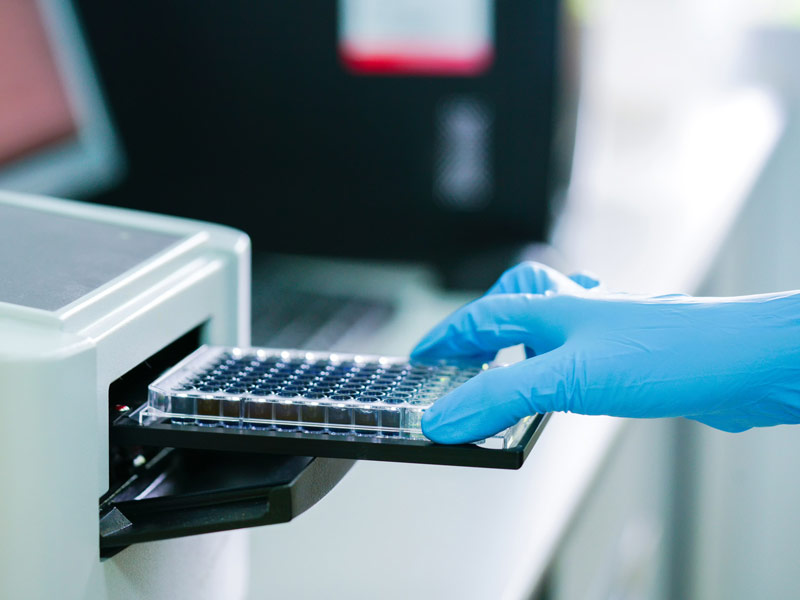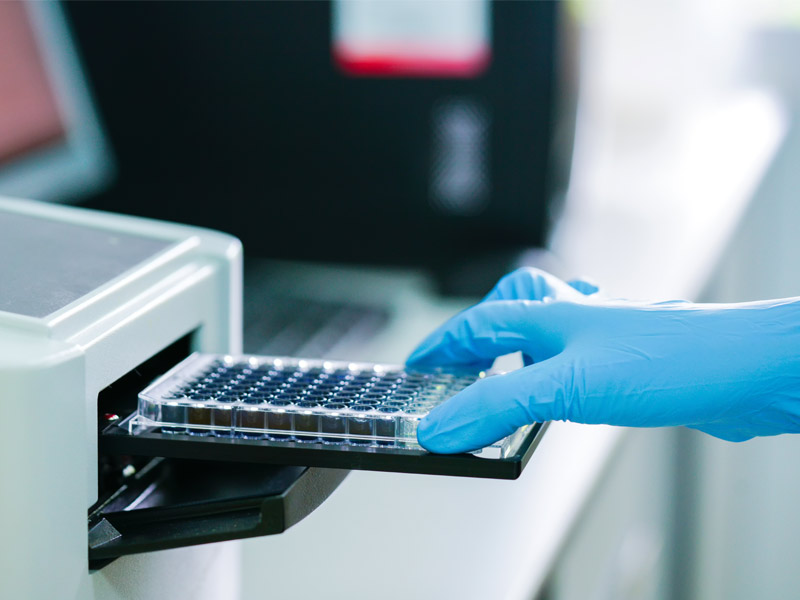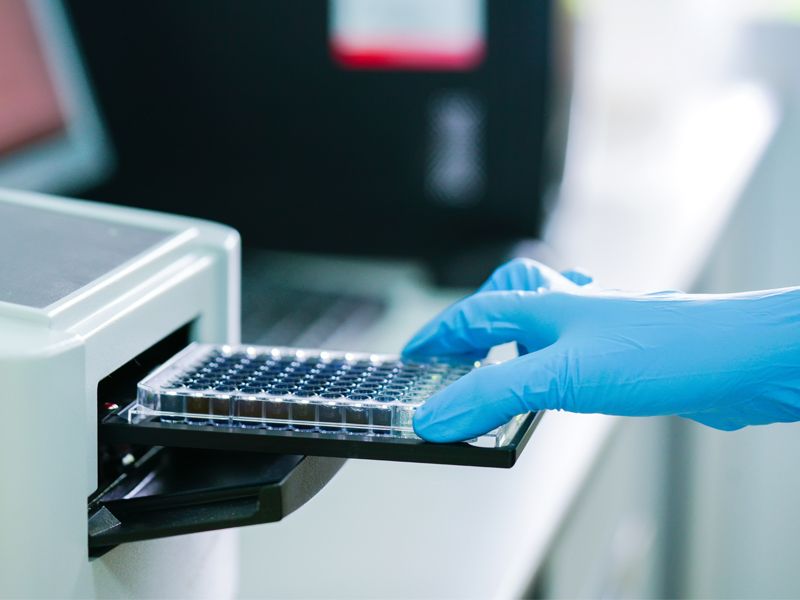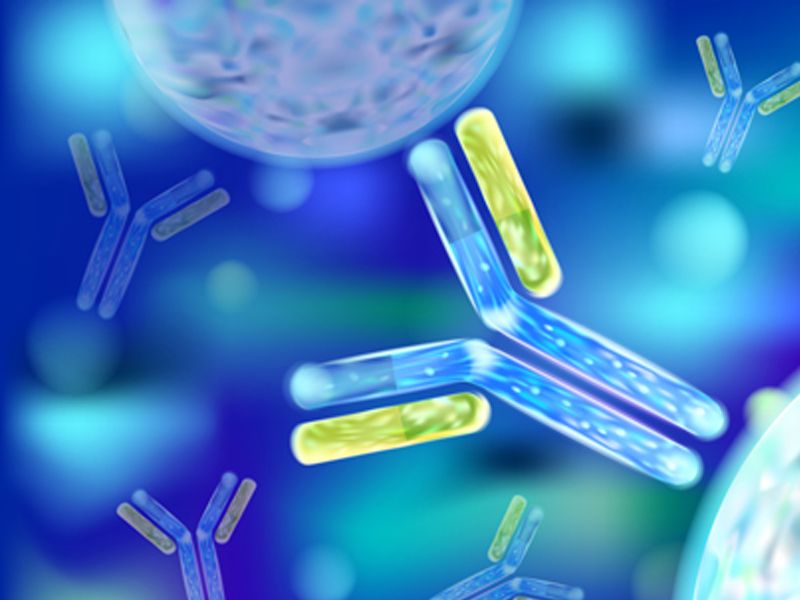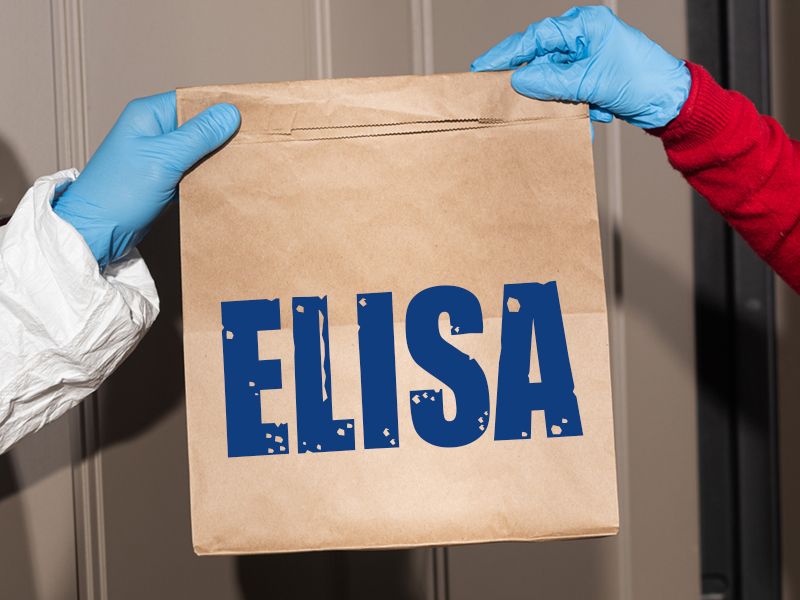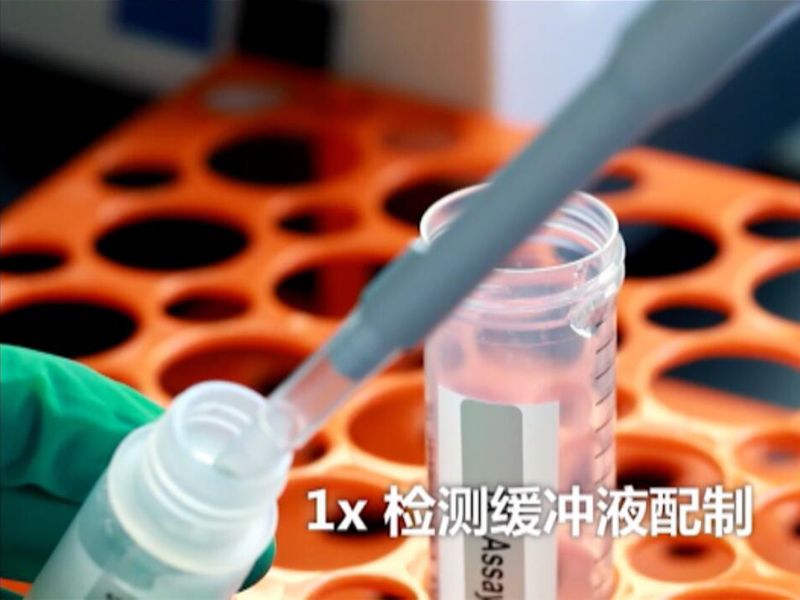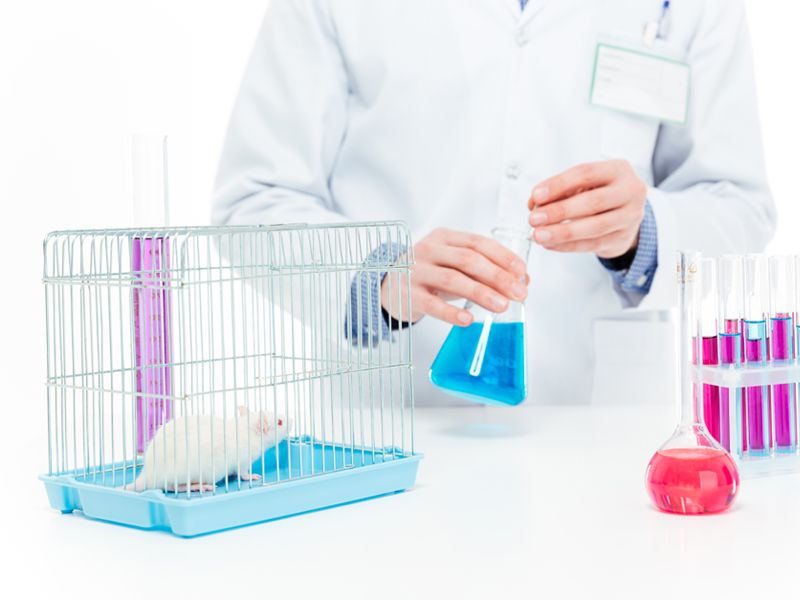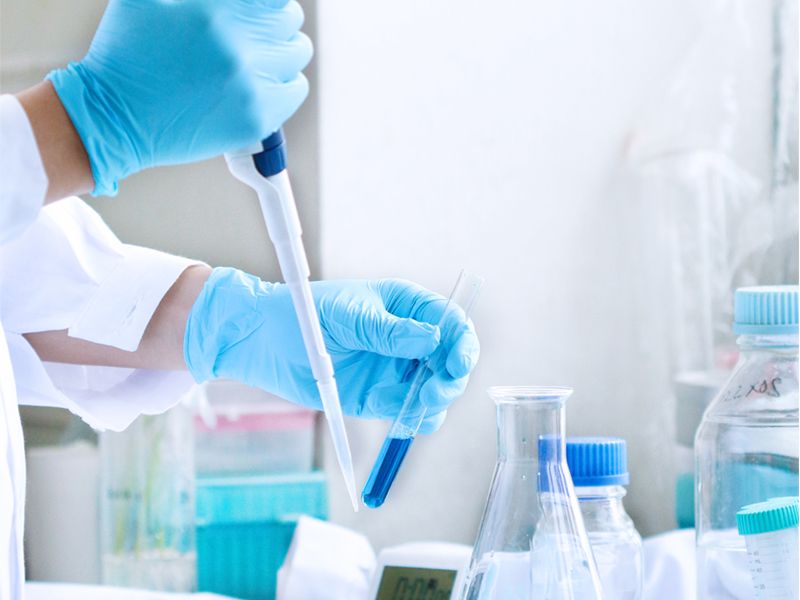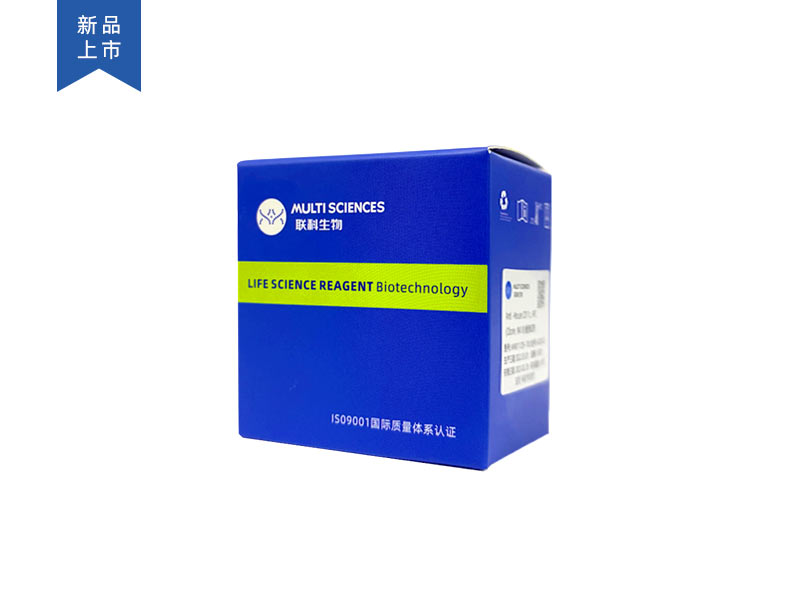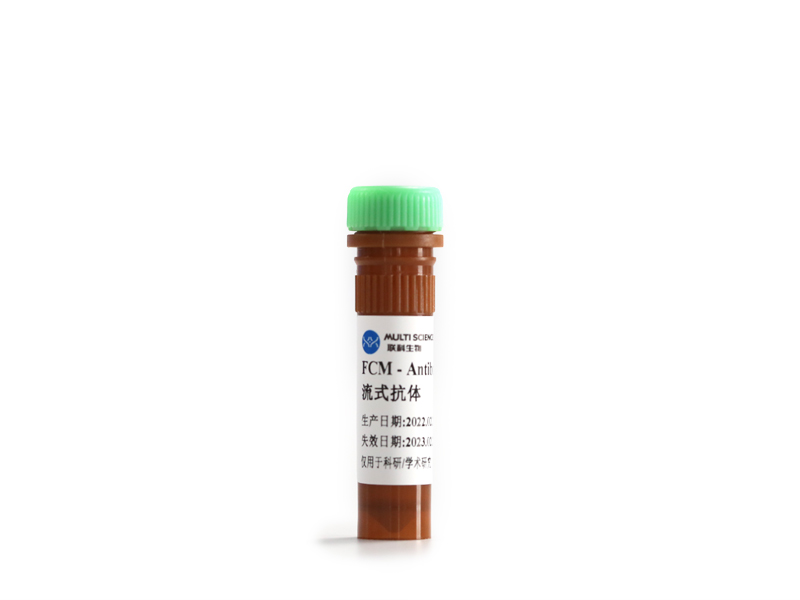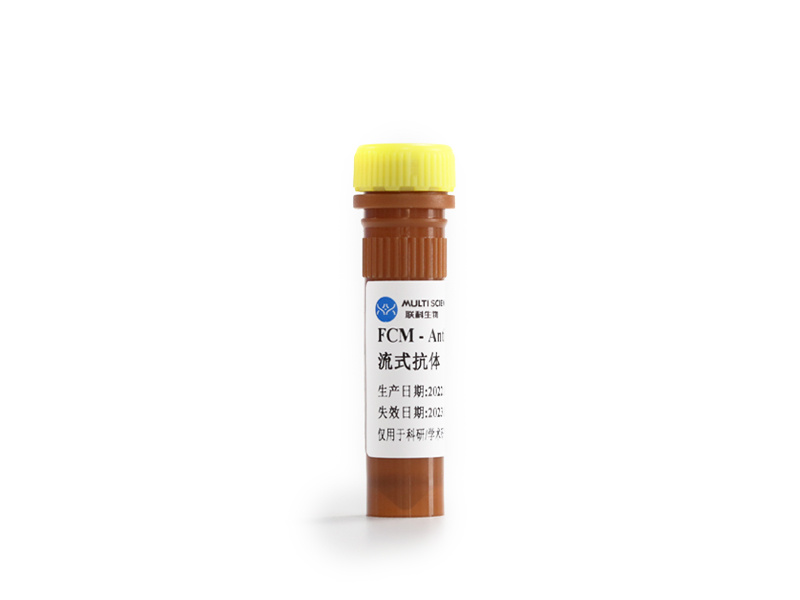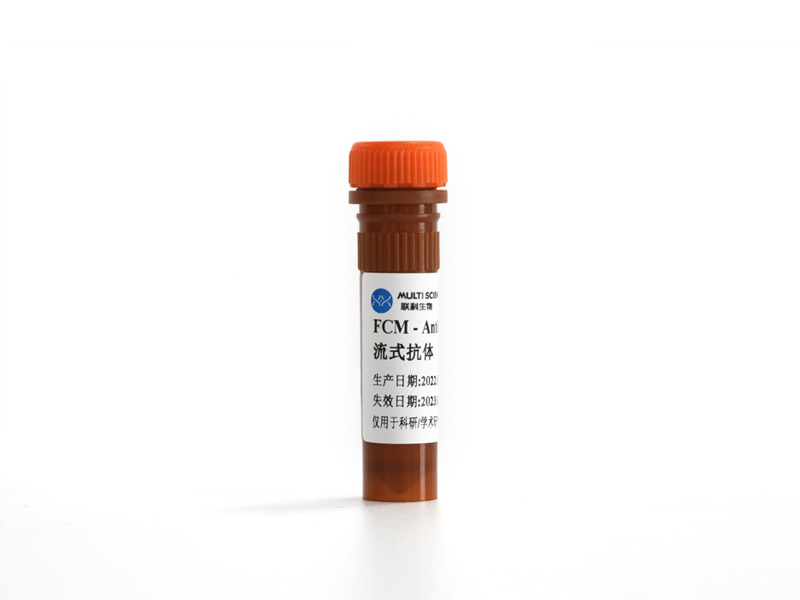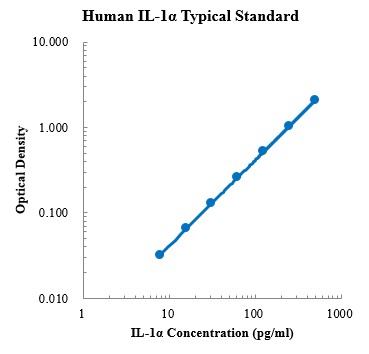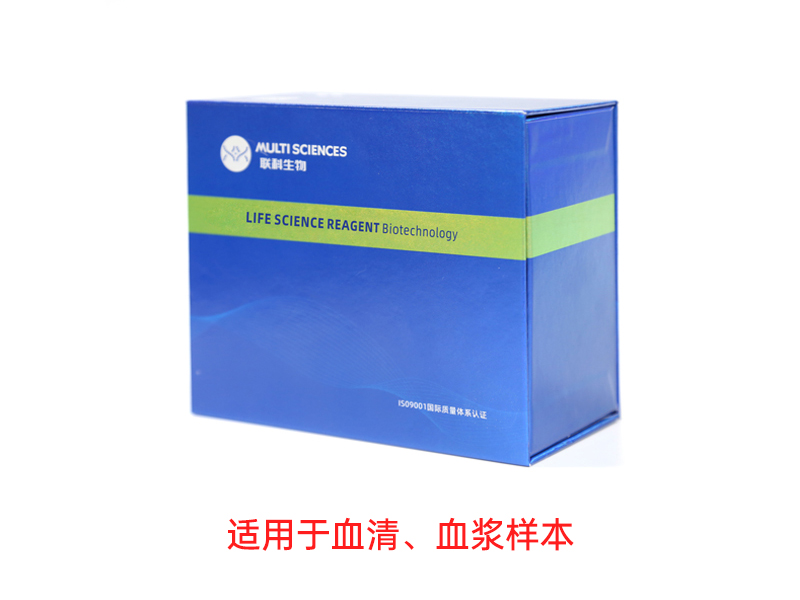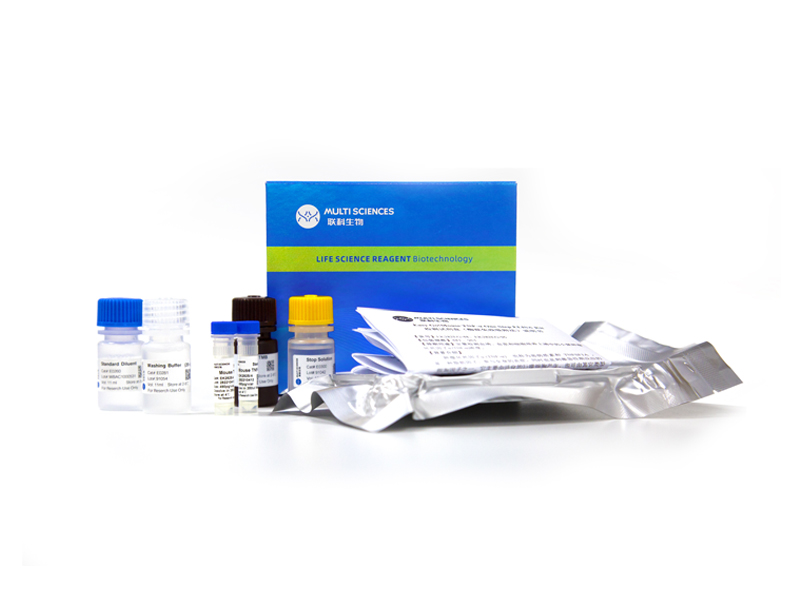Human TNF-α High Sensitivity Standard (人肿瘤坏死因子α高敏 标准品)
¥280.00
描述
文章目录[隐藏]
本产品只包含标准品试剂,如需购买试剂盒请点击下图
-
- EK182HS 294 Citations
- FEATURED ELISA KIT, 高敏试剂盒
Human TNF-α High Sensitivity ELISA Kit检测试剂盒(酶联免疫吸附法)
- ¥2,000.00 – ¥3,400.00
| 商品名 |
Human TNF-α High Sensitivity Standard (人肿瘤坏死因子α高敏 标准品) |
|---|---|
| 组分 |
人TNF-α高敏标准品 |
| 检测方法 |
双抗夹心法 |
| 样本类型 |
血清,血浆,细胞培养上清及其他生物学样本 |
| 板式 |
管 |
| 保存 |
短期4℃,长期-20℃保存 |
| 运输条件 |
4℃蓝冰运输 |
检测原理:本试剂盒采用双抗体夹心酶联免疫吸附检测技术。特异性抗人TNF-α抗体预包被在高亲和力的酶标板上。酶标板孔中加入标准品和待测样本,经过孵育,样本中存在的TNF-α与固相抗体结合。洗涤去除未结合的物质后,加入生物素化的检测抗体孵育。洗涤去除未结合的生物素化的抗体,加入辣根过氧化物酶标记的链霉亲和素 (Streptavidin-HRP)。洗涤后,加入信号增强剂孵育,洗涤去除未结合的物质后,再次加入Streptavidin-HRP。洗涤后,加入显色底物TMB,避光显色。颜色反应的深浅与样本中TNF-α的浓度成正比。加入终止液终止反应,在450 nm波长(参考波长570 - 630 nm)测定吸光度值。
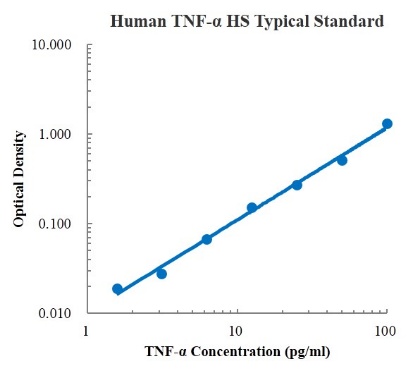
分子信息
TNF 分子靶点信息概述
- 分子名:TNF, tumor necrosis factor
- 基因家族:Tumor necrosis factor superfamily
- 别名:TNFSF2; DIF; TNF-alpha
- 曾用名:TNFA
- 全称:TNF superfamily, member 2; tumor necrosis factor (TNF superfamily, member 2)
TNF 分子靶点综述
TNF-α 为单核细胞、巨噬细胞、中性粒细胞、NK 细胞和 CD4+T 细胞产生的 17 kDa 细胞因子。它在免疫应答中具有多种调节功能,还可作为潜在的热原。TNF-α对刺激物(感染因子或组织受损)产生应答后,在全身循环,激活中性粒细胞,改变血管内皮细胞的特性,调控其它组织的代谢活性,以及通过诱导局部凝血作用展现肿瘤杀伤活性。TNF-α 在关节组织和其它组织发生炎症的发病机制具有重要作用。
人 Human TNF 分子靶点信息
- 分子名:TNF, tumor necrosis factor
- 别称:
- APC1 protein
- cachectin
- DIF
- TNF superfamily, member 2
- TNF-a
- TNF-alpha
- TNF, macrophage-derived
- TNF, monocyte-derived
- TNFA
- TNFSF2
- TNLG1F
- tumor necrosis factor alpha
- tumor necrosis factor ligand 1F
- tumor necrosis factor ligand superfamily member 2
- tumor necrosis factor-alpha
- 基因序列:NCBI_Gene: 7124
- 蛋白序列:UniProtKB: P01375
人 Human TNF靶点分子功能(预测)
Enables several functions, including identical protein binding activity; protease binding activity; and signaling receptor binding activity. Involved in several processes, including negative regulation of macromolecule metabolic process; positive regulation of macromolecule metabolic process; and regulation of apoptotic process. Acts upstream of or within several processes, including regulation of cellular protein metabolic process; regulation of gene expression; and regulation of signal transduction. Located in cell surface; extracellular space; and membrane raft. Is integral component of plasma membrane. Implicated in several diseases, including artery disease (multiple); autoimmune disease (multiple); eye disease (multiple); lung disease (multiple); and skin disease (multiple). Biomarker of several diseases, including anemia (multiple); autoimmune disease (multiple); eye disease (multiple); kidney disease (multiple); and lung disease (multiple).
引用文献统计
该产品被引用的文献总数为:1
- Ibuprofen-loaded bilayer electrospun mesh modulates host response toward promoting full-thickness abdominal wall defect repair
影响因子:3.9刊物:JOURNAL OF BIOMEDICAL MATERIALS RESEARCH PART A发表日期:2024-01-17
ELISA标准品操作常见问题查看更多ELISA标准品操作步骤技术文章
查看更多ELISA标准品操作步骤技术文章
操作步骤
文章目录[隐藏]
- ELISA操作常见问题
- 小心!你的 ELISA 试剂盒可能是假的
- 开学学习计划,如何收集ELISA检测样本——细胞
- 开学学习计划,如何选择ELISA试剂盒
- 开学学习计划,ELISA从新手到入门!
- 一文掌握ELISA实验显色判断、数据分析及标曲拟合
- 血清OR血浆,哪个是ELISA的菜
- ELISA通关必备丨数据篇丨标准曲线不佳
- ELISA通关必备丨操作篇丨常见问题及解决方案
- ELISA通关必备丨操作篇丨溶解与稀释标准品
- ELISA通关必备丨样本篇丨不常见样本
- ELISA通关必备丨样本篇丨常见样本丨细胞
- ELISA通关必备丨如何选择试剂盒
- ELISA通关必备丨基础知识
- 真?假?ELISA试剂盒选择要小心
- ELISA常见类型一 | 双抗夹心法,你要的都在这里!
- ELISA常见类型二 | 竞争法,五分钟搞定!
- 叮!联科向您投递了个ELISA实验操作干货包,请查收~
- 【视频】ELISA实验操作步骤演示视频教程
- ELISA 组织样本的处理—大鼠组织
- 【视频】ELISA实验原理与常见问题分析
- 查看更多ELISA操作相关问题
ELISA操作常见问题
查看更多ELISA操作相关问题
引用文献
文章目录[隐藏]
- Tumor associated neutrophils promote the metastasis of pancreatic ductal adenocarcinoma
- Accumulation of T‑helper 22 cells, interleukin‑22 and myeloid‑derived suppressor cells promotes gastric cancer progression in elderly patients
- Construction of PD1/CD28 chimeric-switch receptor enhances anti-tumor ability of c-Met CAR-T in gastric cancer
- The phenotype of vascular smooth muscle cells co-cultured with endothelial cells is modulated by PDGFR-β/IQGAP1 signaling in LPS-induced intravascular injury
- Consumption of Saturated Fatty Acids-Rich Lard Benefits Recovery of Experimental Arthritis by Activating PPAR-γ
- Overexpression of TOLLIP Protects against Acute Kidney Injury after Paraquat Intoxication through Inhibiting NLRP3 Inflammasome Activation Modulated by Toll-Like Receptor 2/4 Signaling
- Down-regulation of long non-coding RNA XIST aggravates sepsis-induced lung injury by regulating miR-16-5p
- Prunella vulgaris L. Attenuates Experimental Autoimmune Thyroiditis by Inhibiting HMGB1/TLR9 Signaling
- Smoking increases oral mucosa susceptibility to Candida albicans infection via the Nrf2 pathway: In vitro and animal studies
- Chronic exposure to microcystin-leucine-arginine induces epithelial hyperplasia and inflammation in the mouse bladder
- Oral Core–Shell Nanoparticles Embedded in Hydrogel Microspheres for the Efficient Site-Specific Delivery of Magnolol and Enhanced Antiulcerative Colitis Therapy
- Biomimetic Macrophage Membrane and Lipidated Peptide Hybrid Nanovesicles for Atherosclerosis Therapy
- miR-146a is directly regulated by STAT3 in human hepatocellular carcinoma cells and involved in anti-tumor immune suppression
- Dimethyl fumarate ameliorates lipopolysaccharide-induced acute lung injury by inhibiting NLRP3 inflammasome-mediated pyroptosis through enhancing Nrf2 signaling
- Paclitaxel alleviated sepsis-induced acute lung injury by activating MUC1 and suppressing TLR-4/NF-κB pathway
- Ginsenoside Rg3 suppresses the NLRP3 inflammasome activation through inhibition of its assembly
- MiR-128-3p inhibits vascular smooth muscle cell proliferation and migration by repressing FOXO4/MMP9 signaling pathway
- Vitexin protects against ethanol-induced liver injury through Sirt1/p53 signaling pathway
- Downregulating lncRNA PRNCR1 ameliorates LPS-induced pulmonary vascular endothelial cell injury by modulating miR-330-5p/TLR4 axis
- Mycobacterial PPE13 activates inflammasome by interacting with the NATCH and LRR domains of NLRP3
- Up-regulation of circARF3 reduces blood-brain barrier damage in rat subarachnoid hemorrhage model via miR-31-5p/MyD88/NF-κB axis
- Corydalis saxicola Bunting Total Alkaloids ameliorate diet-induced non-alcoholic steatohepatitis by regulating hepatic PI3K/Akt and TLR4/NF-κB pathways in mice
- Thioredoxin relieves lipopolysaccharide‑induced acute kidney injury in mice by reducing inflammation, oxidative stress and apoptosis
- Polysaccharides from Dendrobium officinale ameliorate colitis-induced lung injury via inhibiting inflammation and oxidative stress
- Polysaccharides from Platycodonis Radix ameliorated respiratory syncytial virus-induced epithelial cell apoptosis and inflammation through activation of miR-181a-mediated Hippo and SIRT1 pathways
- Short-term efficacy, safety and survival of laparoscopic radical resection for colorectal cancer patients with bowel obstruction
- Piperlongumine induces apoptosis and reduces bortezomib resistance by inhibiting STAT3 in multiple myeloma cells
- LncRNA H19 alleviates sepsis-induced acute lung injury by regulating the miR-107/TGFBR3 axis
- Role of CD8+ T cell exhaustion in the progression and prognosis of acute respiratory distress syndrome induced by sepsis: a prospective observational study
- Macrophage polarization toward M1 phenotype through NF-κB signaling in patients with Behçet’s disease
- Puerarin Prevents Acute Liver Injury via Inhibiting Inflammatory Responses and ZEB2 Expression
- Effects of Transcutaneous Electrical Acupoint Stimulation on Systemic Inflammatory Response Syndrome of Patients after Percutaneous Nephrolithotomy: A Randomized Controlled Trial
- Licochalcone E improves insulin sensitivity in palmitic acid-treated HepG2 cells through inhibition of the NLRP3 signaling pathway
- Cytokine nanosponges suppressing overactive macrophages and dampening systematic cytokine storm for the treatment of hemophagocytic lymphohistiocytosis
- Chlorogenic acid improves intestinal barrier function by downregulating CD14 to inhibit the NF-κB signaling pathway
- Ultrasound-excited temozolomide sonosensitization induces necroptosis in glioblastoma
- CXCL16/CXCR6 axis promotes bleomycin-induced fibrotic process in MRC-5 cells via the PI3K/AKT/FOXO3a pathway
- Role of CXCL16 in BLM-induced epithelial–mesenchymal transition in human A549 cells
- Knockdown of lncRNA NORAD inhibits the proliferation, inflammation and fibrosis of human mesangial cells under high‑glucose conditions by regulating the miR‑485/NRF1 axis
- Long non‑coding RNA HOTAIR knockdown alleviates lipopolysaccharide‑induced acute respiratory distress syndrome and the associated inflammatory response by modulating the microRNA‑30a‑5p/PDE7A axis
- The protective effects of Agomelatine against Aβ1-42 oligomers-induced cellular senescence mediated by SIRT6 and Agomelatine’s potential in AD treatment
- Systems Pharmacology Based Strategy for Q-Markers Discovery of HuangQin Decoction to Attenuate Intestinal Damage
- Inflammatory Cytokines Changed in Patients With Depression Before and After Repetitive Transcranial Magnetic Stimulation Treatment
- Phillygenin inhibits LPS-induced activation and inflammation of LX2 cells by TLR4/MyD88/NF-κB signaling pathway
- Liraglutide regulates bone destruction and exhibits anti-inflammatory effects in periodontitis in vitro and in vivo
- Gypenosides Protect Orbital Fibroblasts in Graves Ophthalmopathy via Anti-Inflammation and Anti-Fibrosis Effects
- Effects of the Chinese herbal medicine Hong Huang decoction, on myocardial injury in breast cancer patients who underwent anthracycline-based chemotherapy
- Inhibition of microRNA-92a ameliorates lipopolysaccharide-induced endothelial barrier dysfunction by targeting ITGA5 through the PI3K/Akt signaling pathway in human pulmonary microvascular endothelial cells
- Promotion of angiogenesis in vitro by Astragalus polysaccharide via activation of TLR4 signaling pathway
- Protective mechanisms of Zanthoxylum bungeanum essential oil on DSS-induced ulcerative colitis in mice based on a colonic mucosal transcriptomic approach
- Atorvastatin inhibits renal inflammatory response induced by calcium oxalate crystals via inhibiting the activation of TLR4/NF-κB and NLRP3 inflammasome
- Development, characterisation, and in vitro anti-tumor effect of self-microemulsifying drug delivery system containing polyphyllin I
- Nucleotide-binding oligomerization domain (NOD) plays an important role in neonatal infection
- Arctiin suppresses H9N2 avian influenza virus-mediated inflammation via activation of Nrf2/HO-1 signaling
- Vitamin D deficiency is associated with thyroid autoimmunity: results from an epidemiological survey in Tianjin, China
- Original research: Shed antigen-induced blocking effect on CAR-T cells targeting Glypican-3 in Hepatocellular Carcinoma
- NLRP3 inflammasome inhibitor INF39 attenuated NLRP3 assembly in macrophages
- Baicalein inhibits inflammatory response and promotes osteogenic activity in periodontal ligament cells challenged with lipopolysaccharides
- Helicobacter pylori tumor necrosis factor-α inducing protein promotes cytokine expression via nuclear factor-κB
- Overexpression of Forkhead box C1 attenuates oxidative stress, inflammation and apoptosis in chronic obstructive pulmonary disease
- Insulin Exacerbates Inflammation in Fibroblast-Like Synoviocytes
- Effects of β2/aβ2 on oxLDL-induced CD36 activation in THP-1 macrophages
- Fusobacterium nucleatum stimulates monocyte adhesion to and transmigration through endothelial cells
- MiR-146a-5p Mimic Inhibits NLRP3 Inflammasome Downstream Inflammatory Factors and CLIC4 in Neonatal Necrotizing Enterocolitis
- Ex vivo lung perfusion with perfusate purification for human donor lungs following prolonged cold storage
- A cross-sectional study reveals a chronic low-grade inflammation in achalasia
- hnRNPA2/B1 Ameliorates LPS-Induced Endothelial Injury through NF-κB Pathway and VE-Cadherin/β-Catenin Signaling Modulation In Vitro
- Progesterone Suppresses Neisseria gonorrhoeae-Induced Inflammation Through Inhibition of NLRP3 Inflammasome Pathway in THP-1 Cells and Murine Models
- MicroRNA-92a serves as a risk factor in sepsis-induced ARDS and regulates apoptosis and cell migration in lipopolysaccharide-induced HPMEC and A549 cell injury
- Evaluation of in vitro anti-acne activities of Ocimum basilicum L. water extract
- Astragaloside IV inhibits PMA-induced EPCR shedding through MAPKs and PKC pathway
- Anti-inflammatory activities of phospholipase C inhibitor U73122: Inhibition of monocyte-to-macrophage transformation and LPS-induced pro-inflammatory cytokine expression
- Analgesic effect of TAK-242 on neuropathic pain in rats
- Hugan Qingzhi medication ameliorates free fatty acid-induced L02 hepatocyte endoplasmic reticulum stress by regulating the activation of PKC-δ
- Extracellular mitochondrial DNA promote NLRP3 inflammasome activation and induce acute lung injury through TLR9 and NF-κB
- Downregulation of MALAT1 alleviates saturated fatty acid-induced myocardial inflammatory injury via the miR-26a/HMGB1/TLR4/NF-κB axis
- Soluble CXCL16 promotes TNF-α-induced apoptosis in DLBCL via the AMAD10-NF-κB regulatory feedback loop
- Tumor Necrosis Factor-α Variations in Patients With Major Depressive Disorder Before and After Antidepressant Treatment
- Influences of surface coating of PLGA nanoparticles on immune activation of macrophages
- Epithelial cell adhesion molecule promotes breast cancer resistance protein-mediated multidrug resistance in breast cancer by inducing partial epithelial–mesenchymal transition
- lncRNA SNHG16 promotes the occurrence of osteoarthritis by sponging miR‑373‑3p
- Serum concentrations of TNF-α and its soluble receptors in Graves’ disease
- CircGCN1L1 promotes synoviocyte proliferation and chondrocyte apoptosis by targeting miR-330-3p and TNF-α in TMJ osteoarthritis
- Progesterone-induced blocking factor-mediated Th1/Th2 balance correlates with fetal arrest in women who underwent in vitro fertilization and embryo transfer
- Reducing Hinge Flexibility of CAR-T Cells Prolongs Survival In Vivo With Low Cytokines Release
- Adoptive immunotherapy using T lymphocytes redirected to glypican-3 for the treatment of lung squamous cell carcinoma
- Human natural killer cells for targeting delivery of gold nanostars and bimodal imaging directed photothermal/photodynamic therapy and immunotherapy
- Decidua-derived granulocyte macrophage colony-stimulating factor induces polymorphonuclear myeloid-derived suppressor cells from circulating CD15+ neutrophils
- Dynamic changes of innate lymphoid cells in acute ST-segment elevation myocardial infarction and its association with clinical outcomes
- Long Noncoding RNA and Circular RNA Expression Profiles of Monocyte-Derived Dendritic Cells in Autoimmune Hepatitis
- The Effect of Entecavir Therapy on Immune Status in Chronic Hepatitis B Patients
- Interleukin-21 Inhibits HBV Replication in vitro
- Alteration of Myeloid-Derived Suppressor Cells, Chronic Inflammatory Cytokines, and Exosomal miRNA Contribute to the Peritoneal Immune Disorder of Patients With Endometriosis
- A novel bispecific antibody targeting CD3 and prolactin receptor (PRLR) against PRLR-expression breast cancer
- Elevated Peripheral Frequencies of Th22 Cells: A Novel Potent Participant in Obesity and Type 2 Diabetes
- MicroRNA 27b-3p Modulates SYK in Pediatric Asthma Induced by Dust Mites
- Cytokine-induced killer cells efficiently kill stem-like cancer cells of nasopharyngeal carcinoma via the NKG2D-ligands recognition
- JAK-STAT Domain Enhanced MUC1-CAR-T Cells Induced Esophageal Cancer Elimination
- Chimeric cytokine receptor enhancing PSMA-CAR-T cell-mediated prostate cancer regression
- Treatment of hepatocellular carcinoma with a GPC3-targeted bispecific T cell engager
- Development of GPC3 and EGFR-dual-targeting chimeric antigen receptor-T cells for adoptive T cell therapy
- Selective Targeting of Glioblastoma with EGFRvIII/EGFR Bitargeted Chimeric Antigen Receptor T Cell
- Claudin18.2-Specific Chimeric Antigen Receptor Engineered T Cells for the Treatment of Gastric Cancer
- Treatment Efficacy of Chuang Ling Ye, a Traditional Chinese Herbal Medicine Compound, on Idiopathic Granulomatous Mastitis: A Randomized Controlled Trial
- Nanobody-based CAR T cells targeting intracellular tumor antigens
- CD137 Signaling Promotes Endothelial Apoptosis by Inhibiting Nrf2 Pathway, and Upregulating NF-κB Pathway
- Hypaphorine exerts anti-inflammatory effects in sepsis induced acute lung injury via modulating DUSP1/p38/JNK pathway
- Volume kinetics of Ringer's lactate solution in acute inflammatory disease
- Myeloid-derived suppressor cell cytokine secretion as prognostic factor in myelodysplastic syndromes
- Effects of high serum uric acid levels on oxidative stress levels and semen parameters in male infertile patients
- Increased Tim-3+ monocytes/macrophages are associated with disease severity in patients with IgA nephropathy
- Lipopolysaccharide from biofilm-forming Pseudomonas aeruginosa PAO1 induces macrophage hyperinflammatory responses
- Tonsillar Microbiome-Derived Lantibiotics Induce Structural Changes of IL-6 and IL-21 Receptors and Modulate Host Immunity
- Expression profile of PU.1 in CD4+T cells from patients with systemic lupus erythematosus
- C. butyricum lipoteichoic acid inhibits the inflammatory response and apoptosis in HT-29 cells induced by S. aureus lipoteichoic acid
- Changes in peripheral blood cytokines in patients with severe fever with thrombocytopenia syndrome
- Bu-Shen-Fang-Chuan formula attenuates cigarette smoke-induced inflammation by modulating the PI3K/Akt-Nrf2 and NF-κB signalling pathways
- Fibrinogen-Like Protein 1 as a Novel Biomarker of Psoriasis Severity
- The relationship between dyslipidemia and inflammation among adults in east coast China: A cross-sectional study
- Chronic Microcystin-LR-Induced α-Synuclein Promotes Neuroinflammation Through Activation of the NLRP3 Inflammasome in Microglia
Tumor associated neutrophils promote the metastasis of pancreatic ductal adenocarcinoma
Accumulation of T‑helper 22 cells, interleukin‑22 and myeloid‑derived suppressor cells promotes gastric cancer progression in elderly patients
Construction of PD1/CD28 chimeric-switch receptor enhances anti-tumor ability of c-Met CAR-T in gastric cancer
The phenotype of vascular smooth muscle cells co-cultured with endothelial cells is modulated by PDGFR-β/IQGAP1 signaling in LPS-induced intravascular injury
Consumption of Saturated Fatty Acids-Rich Lard Benefits Recovery of Experimental Arthritis by Activating PPAR-γ
Overexpression of TOLLIP Protects against Acute Kidney Injury after Paraquat Intoxication through Inhibiting NLRP3 Inflammasome Activation Modulated by Toll-Like Receptor 2/4 Signaling
Down-regulation of long non-coding RNA XIST aggravates sepsis-induced lung injury by regulating miR-16-5p
Prunella vulgaris L. Attenuates Experimental Autoimmune Thyroiditis by Inhibiting HMGB1/TLR9 Signaling
Smoking increases oral mucosa susceptibility to Candida albicans infection via the Nrf2 pathway: In vitro and animal studies
Chronic exposure to microcystin-leucine-arginine induces epithelial hyperplasia and inflammation in the mouse bladder
Oral Core–Shell Nanoparticles Embedded in Hydrogel Microspheres for the Efficient Site-Specific Delivery of Magnolol and Enhanced Antiulcerative Colitis Therapy
Biomimetic Macrophage Membrane and Lipidated Peptide Hybrid Nanovesicles for Atherosclerosis Therapy
miR-146a is directly regulated by STAT3 in human hepatocellular carcinoma cells and involved in anti-tumor immune suppression
Dimethyl fumarate ameliorates lipopolysaccharide-induced acute lung injury by inhibiting NLRP3 inflammasome-mediated pyroptosis through enhancing Nrf2 signaling
Paclitaxel alleviated sepsis-induced acute lung injury by activating MUC1 and suppressing TLR-4/NF-κB pathway
Ginsenoside Rg3 suppresses the NLRP3 inflammasome activation through inhibition of its assembly
MiR-128-3p inhibits vascular smooth muscle cell proliferation and migration by repressing FOXO4/MMP9 signaling pathway
Vitexin protects against ethanol-induced liver injury through Sirt1/p53 signaling pathway
Downregulating lncRNA PRNCR1 ameliorates LPS-induced pulmonary vascular endothelial cell injury by modulating miR-330-5p/TLR4 axis
Mycobacterial PPE13 activates inflammasome by interacting with the NATCH and LRR domains of NLRP3
Up-regulation of circARF3 reduces blood-brain barrier damage in rat subarachnoid hemorrhage model via miR-31-5p/MyD88/NF-κB axis
Corydalis saxicola Bunting Total Alkaloids ameliorate diet-induced non-alcoholic steatohepatitis by regulating hepatic PI3K/Akt and TLR4/NF-κB pathways in mice
Thioredoxin relieves lipopolysaccharide‑induced acute kidney injury in mice by reducing inflammation, oxidative stress and apoptosis
Polysaccharides from Dendrobium officinale ameliorate colitis-induced lung injury via inhibiting inflammation and oxidative stress
Polysaccharides from Platycodonis Radix ameliorated respiratory syncytial virus-induced epithelial cell apoptosis and inflammation through activation of miR-181a-mediated Hippo and SIRT1 pathways
Short-term efficacy, safety and survival of laparoscopic radical resection for colorectal cancer patients with bowel obstruction
Piperlongumine induces apoptosis and reduces bortezomib resistance by inhibiting STAT3 in multiple myeloma cells
LncRNA H19 alleviates sepsis-induced acute lung injury by regulating the miR-107/TGFBR3 axis
Role of CD8+ T cell exhaustion in the progression and prognosis of acute respiratory distress syndrome induced by sepsis: a prospective observational study
Macrophage polarization toward M1 phenotype through NF-κB signaling in patients with Behçet’s disease
Puerarin Prevents Acute Liver Injury via Inhibiting Inflammatory Responses and ZEB2 Expression
Effects of Transcutaneous Electrical Acupoint Stimulation on Systemic Inflammatory Response Syndrome of Patients after Percutaneous Nephrolithotomy: A Randomized Controlled Trial
Licochalcone E improves insulin sensitivity in palmitic acid-treated HepG2 cells through inhibition of the NLRP3 signaling pathway
Cytokine nanosponges suppressing overactive macrophages and dampening systematic cytokine storm for the treatment of hemophagocytic lymphohistiocytosis
Chlorogenic acid improves intestinal barrier function by downregulating CD14 to inhibit the NF-κB signaling pathway
Ultrasound-excited temozolomide sonosensitization induces necroptosis in glioblastoma
CXCL16/CXCR6 axis promotes bleomycin-induced fibrotic process in MRC-5 cells via the PI3K/AKT/FOXO3a pathway
Role of CXCL16 in BLM-induced epithelial–mesenchymal transition in human A549 cells
Knockdown of lncRNA NORAD inhibits the proliferation, inflammation and fibrosis of human mesangial cells under high‑glucose conditions by regulating the miR‑485/NRF1 axis
Long non‑coding RNA HOTAIR knockdown alleviates lipopolysaccharide‑induced acute respiratory distress syndrome and the associated inflammatory response by modulating the microRNA‑30a‑5p/PDE7A axis
The protective effects of Agomelatine against Aβ1-42 oligomers-induced cellular senescence mediated by SIRT6 and Agomelatine’s potential in AD treatment
Systems Pharmacology Based Strategy for Q-Markers Discovery of HuangQin Decoction to Attenuate Intestinal Damage
Inflammatory Cytokines Changed in Patients With Depression Before and After Repetitive Transcranial Magnetic Stimulation Treatment
Phillygenin inhibits LPS-induced activation and inflammation of LX2 cells by TLR4/MyD88/NF-κB signaling pathway
Liraglutide regulates bone destruction and exhibits anti-inflammatory effects in periodontitis in vitro and in vivo
Gypenosides Protect Orbital Fibroblasts in Graves Ophthalmopathy via Anti-Inflammation and Anti-Fibrosis Effects
Effects of the Chinese herbal medicine Hong Huang decoction, on myocardial injury in breast cancer patients who underwent anthracycline-based chemotherapy
Inhibition of microRNA-92a ameliorates lipopolysaccharide-induced endothelial barrier dysfunction by targeting ITGA5 through the PI3K/Akt signaling pathway in human pulmonary microvascular endothelial cells
Promotion of angiogenesis in vitro by Astragalus polysaccharide via activation of TLR4 signaling pathway
Protective mechanisms of Zanthoxylum bungeanum essential oil on DSS-induced ulcerative colitis in mice based on a colonic mucosal transcriptomic approach
Atorvastatin inhibits renal inflammatory response induced by calcium oxalate crystals via inhibiting the activation of TLR4/NF-κB and NLRP3 inflammasome
Development, characterisation, and in vitro anti-tumor effect of self-microemulsifying drug delivery system containing polyphyllin I
Nucleotide-binding oligomerization domain (NOD) plays an important role in neonatal infection
Arctiin suppresses H9N2 avian influenza virus-mediated inflammation via activation of Nrf2/HO-1 signaling
Vitamin D deficiency is associated with thyroid autoimmunity: results from an epidemiological survey in Tianjin, China
Original research: Shed antigen-induced blocking effect on CAR-T cells targeting Glypican-3 in Hepatocellular Carcinoma
NLRP3 inflammasome inhibitor INF39 attenuated NLRP3 assembly in macrophages
Baicalein inhibits inflammatory response and promotes osteogenic activity in periodontal ligament cells challenged with lipopolysaccharides
Helicobacter pylori tumor necrosis factor-α inducing protein promotes cytokine expression via nuclear factor-κB
Overexpression of Forkhead box C1 attenuates oxidative stress, inflammation and apoptosis in chronic obstructive pulmonary disease
Insulin Exacerbates Inflammation in Fibroblast-Like Synoviocytes
Effects of β2/aβ2 on oxLDL-induced CD36 activation in THP-1 macrophages
Fusobacterium nucleatum stimulates monocyte adhesion to and transmigration through endothelial cells
MiR-146a-5p Mimic Inhibits NLRP3 Inflammasome Downstream Inflammatory Factors and CLIC4 in Neonatal Necrotizing Enterocolitis
Ex vivo lung perfusion with perfusate purification for human donor lungs following prolonged cold storage
A cross-sectional study reveals a chronic low-grade inflammation in achalasia
hnRNPA2/B1 Ameliorates LPS-Induced Endothelial Injury through NF-κB Pathway and VE-Cadherin/β-Catenin Signaling Modulation In Vitro
Progesterone Suppresses Neisseria gonorrhoeae-Induced Inflammation Through Inhibition of NLRP3 Inflammasome Pathway in THP-1 Cells and Murine Models
MicroRNA-92a serves as a risk factor in sepsis-induced ARDS and regulates apoptosis and cell migration in lipopolysaccharide-induced HPMEC and A549 cell injury
Evaluation of in vitro anti-acne activities of Ocimum basilicum L. water extract
Astragaloside IV inhibits PMA-induced EPCR shedding through MAPKs and PKC pathway
Anti-inflammatory activities of phospholipase C inhibitor U73122: Inhibition of monocyte-to-macrophage transformation and LPS-induced pro-inflammatory cytokine expression
Analgesic effect of TAK-242 on neuropathic pain in rats
Hugan Qingzhi medication ameliorates free fatty acid-induced L02 hepatocyte endoplasmic reticulum stress by regulating the activation of PKC-δ
Extracellular mitochondrial DNA promote NLRP3 inflammasome activation and induce acute lung injury through TLR9 and NF-κB
Downregulation of MALAT1 alleviates saturated fatty acid-induced myocardial inflammatory injury via the miR-26a/HMGB1/TLR4/NF-κB axis
Soluble CXCL16 promotes TNF-α-induced apoptosis in DLBCL via the AMAD10-NF-κB regulatory feedback loop
Tumor Necrosis Factor-α Variations in Patients With Major Depressive Disorder Before and After Antidepressant Treatment
Influences of surface coating of PLGA nanoparticles on immune activation of macrophages
Epithelial cell adhesion molecule promotes breast cancer resistance protein-mediated multidrug resistance in breast cancer by inducing partial epithelial–mesenchymal transition
lncRNA SNHG16 promotes the occurrence of osteoarthritis by sponging miR‑373‑3p
Serum concentrations of TNF-α and its soluble receptors in Graves’ disease
CircGCN1L1 promotes synoviocyte proliferation and chondrocyte apoptosis by targeting miR-330-3p and TNF-α in TMJ osteoarthritis
Progesterone-induced blocking factor-mediated Th1/Th2 balance correlates with fetal arrest in women who underwent in vitro fertilization and embryo transfer
Reducing Hinge Flexibility of CAR-T Cells Prolongs Survival In Vivo With Low Cytokines Release
Adoptive immunotherapy using T lymphocytes redirected to glypican-3 for the treatment of lung squamous cell carcinoma
Human natural killer cells for targeting delivery of gold nanostars and bimodal imaging directed photothermal/photodynamic therapy and immunotherapy
Decidua-derived granulocyte macrophage colony-stimulating factor induces polymorphonuclear myeloid-derived suppressor cells from circulating CD15+ neutrophils
Dynamic changes of innate lymphoid cells in acute ST-segment elevation myocardial infarction and its association with clinical outcomes
Long Noncoding RNA and Circular RNA Expression Profiles of Monocyte-Derived Dendritic Cells in Autoimmune Hepatitis
The Effect of Entecavir Therapy on Immune Status in Chronic Hepatitis B Patients
Interleukin-21 Inhibits HBV Replication in vitro
Alteration of Myeloid-Derived Suppressor Cells, Chronic Inflammatory Cytokines, and Exosomal miRNA Contribute to the Peritoneal Immune Disorder of Patients With Endometriosis
A novel bispecific antibody targeting CD3 and prolactin receptor (PRLR) against PRLR-expression breast cancer
Elevated Peripheral Frequencies of Th22 Cells: A Novel Potent Participant in Obesity and Type 2 Diabetes
MicroRNA 27b-3p Modulates SYK in Pediatric Asthma Induced by Dust Mites
Cytokine-induced killer cells efficiently kill stem-like cancer cells of nasopharyngeal carcinoma via the NKG2D-ligands recognition
JAK-STAT Domain Enhanced MUC1-CAR-T Cells Induced Esophageal Cancer Elimination
Chimeric cytokine receptor enhancing PSMA-CAR-T cell-mediated prostate cancer regression
Treatment of hepatocellular carcinoma with a GPC3-targeted bispecific T cell engager
Development of GPC3 and EGFR-dual-targeting chimeric antigen receptor-T cells for adoptive T cell therapy
Selective Targeting of Glioblastoma with EGFRvIII/EGFR Bitargeted Chimeric Antigen Receptor T Cell
Claudin18.2-Specific Chimeric Antigen Receptor Engineered T Cells for the Treatment of Gastric Cancer
Treatment Efficacy of Chuang Ling Ye, a Traditional Chinese Herbal Medicine Compound, on Idiopathic Granulomatous Mastitis: A Randomized Controlled Trial
Nanobody-based CAR T cells targeting intracellular tumor antigens
CD137 Signaling Promotes Endothelial Apoptosis by Inhibiting Nrf2 Pathway, and Upregulating NF-κB Pathway
Hypaphorine exerts anti-inflammatory effects in sepsis induced acute lung injury via modulating DUSP1/p38/JNK pathway
Volume kinetics of Ringer's lactate solution in acute inflammatory disease
Myeloid-derived suppressor cell cytokine secretion as prognostic factor in myelodysplastic syndromes
Effects of high serum uric acid levels on oxidative stress levels and semen parameters in male infertile patients
Increased Tim-3+ monocytes/macrophages are associated with disease severity in patients with IgA nephropathy
Lipopolysaccharide from biofilm-forming Pseudomonas aeruginosa PAO1 induces macrophage hyperinflammatory responses
Tonsillar Microbiome-Derived Lantibiotics Induce Structural Changes of IL-6 and IL-21 Receptors and Modulate Host Immunity
Expression profile of PU.1 in CD4+T cells from patients with systemic lupus erythematosus
C. butyricum lipoteichoic acid inhibits the inflammatory response and apoptosis in HT-29 cells induced by S. aureus lipoteichoic acid
Changes in peripheral blood cytokines in patients with severe fever with thrombocytopenia syndrome
Bu-Shen-Fang-Chuan formula attenuates cigarette smoke-induced inflammation by modulating the PI3K/Akt-Nrf2 and NF-κB signalling pathways
Fibrinogen-Like Protein 1 as a Novel Biomarker of Psoriasis Severity
The relationship between dyslipidemia and inflammation among adults in east coast China: A cross-sectional study
Chronic Microcystin-LR-Induced α-Synuclein Promotes Neuroinflammation Through Activation of the NLRP3 Inflammasome in Microglia

